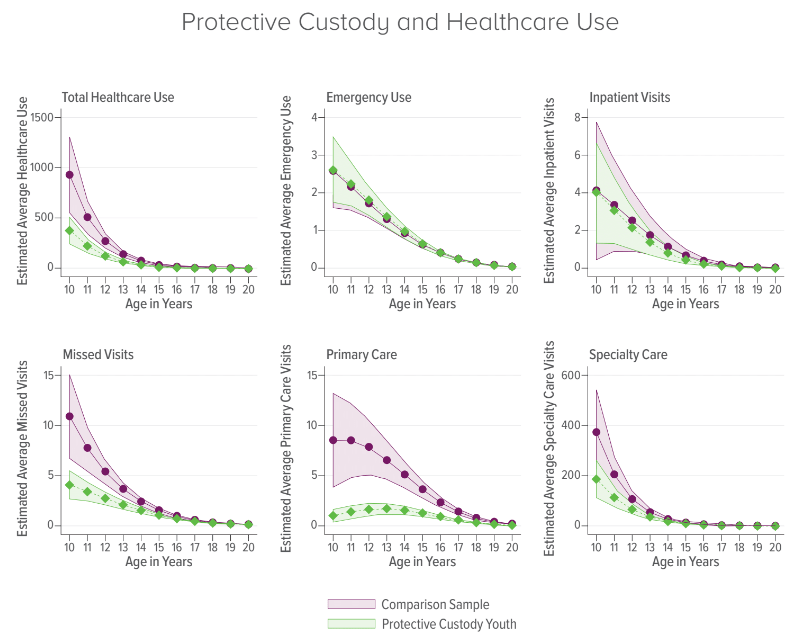Foster Care Does Not Cause Higher Service Utilization, Risky Behaviors Do
Published April 2022 | Academic Pediatrics
Compared to others their age, children living in foster care and other forms of protective custody do tend to utilize more healthcare services. However, once adjusted to compare children in foster care to peers who also face mental health and substance abuse challenges, new research indicates that being placed in protective custody does not drive up healthcare utilization.
If anything, children in foster care are less likely than children not in protective custody to miss appointments and receive less routine primary care services, according to the study led by Sarah Beal, PhD, and Mary Greiner, MD, MS.
“We were surprised that health risk behaviors explained so much of the variability in emergency and inpatient healthcare use,” Beal says.
The findings were based on data from 2,787 youth in protective custody compared to 2,787 demographically matched peers encountered by Cincinnati Children’s.
“The gap in primary and specialty care, where youth in foster care are using less services once we control for health risk behaviors, could explain why our healthcare system is failing to address health risks in this population. Healthcare delivery changes customized for the needs of children in foster care could lead to improvements in primary care, more prevention of health risks, and declines in emergency and inpatient care,” Beal says.
These findings and related substance use research have led to a 5-year grant from the Substance Abuse and Mental Health Services Administration (SAMHSA) to incorporate standardized screening, brief intervention, and referral to treatment to address substance use among young people in foster care. The CHECK (Comprehensive Health Evaluations for Cincinnati’s Kids) Foster Care Center now screens all children aged 10 and older for substance use and provides intervention. Similar screening practices are being rolled out hospital-wide.
Differences in healthcare utilization for youth in protective custody and comparison youth across ages 10-20, adjusting for duration of representation in the study data, demographic characteristics, health characteristics, and health risk behaviors.






